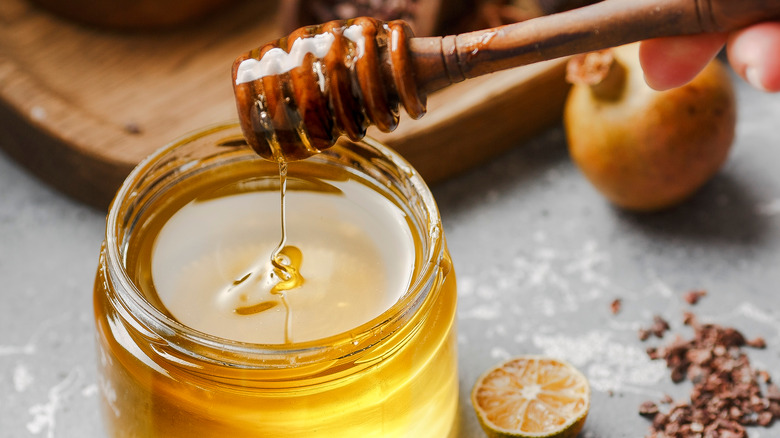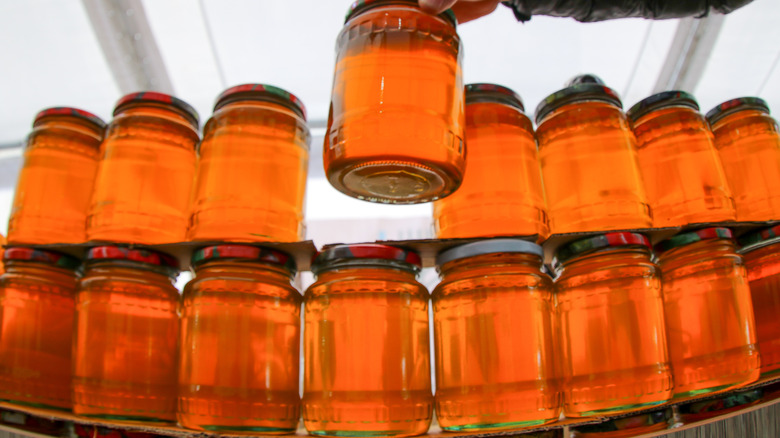The Real Reason Your Honey Could Be Radioactive
When Jim Kaste, an associate professor of geology at William & Mary, was teaching a seminar on how radioactive materials could affect people downwind from a nuclear site, he asked his students to bring local foods back with them as they returned from spring break. His point, as a 2020 press release from the college explained, was to show how traces of cesium-137, a radioactive isotope produced by nuclear bombs, can show up everywhere. And, when tested, it did just that. However, in the honey from Raleigh, North Carolina, it appeared with 100 times more intensity than in any other food samples tested.
Before continuing, it's worth stressing that, though 100 times is an unusually large number for radioactive isotopes, the actual amount is not as dangerous for humans as it may sound. In fact, it is not dangerous at all. "I eat more honey now than I did when I started this project," Kaste soothes in the press release. "I feed my kids honey. I'm not trying to tell people they shouldn't eat honey."
Still, the amount of cesium found within the honey sample was astounding. "I couldn't believe it, really," Kaste exclaimed. "I reproduced the measurement. And it was, again, 100 times hotter than any of these other foods." So he and a couple students conducted a study of 115 farmer's market honey samples from all along the East Coast to see if they could theorize how this radioactive material appeared at such a high quantity in honey.
Tasting the bomb tests
The study was finally published in Nature on March 29, 2021. In it, researchers connect the presence of cesium in honey with the nuclear bomb tests that occurred above Nevada and the Marshall Islands before the signing of the Nuclear Test Ban Treaty in 1963. Scientists knew at the time that weather patterns would deposit some level of the radioactive elements present in the atmosphere along the Eastern seaboard, hence the study on local foods in the first place.
However, the researchers found that honey — particularly honey from North Carolina and states further south — contained unexpectedly high levels of cesium because the soils in which their flora grew had low levels of potassium. While cesium and potassium are not interchangeable, they are similar enough to the extent that plants in low potassium conditions could support their potassium intake with cesium, like a nutritional supplement. Then the bees pollinate the flowers, taking the cesium-laced pollen around with them, thus contaminating the honey.
Soils in the north boast higher amounts of potassium, so they tended to have lower to negligible amounts of cesium. Some of the honeys that did show cesium, Kaste explained in the press release, gathered their radioactive element from trips down south: "[A beekeeper] told me that bees can't survive the Maine winters, so they send their hives south for the winter." Unfortunately, the cesium will be present in the honey for the rest of our lives. Still, as previously stated, the honey's safe to eat, so that's a relief!

